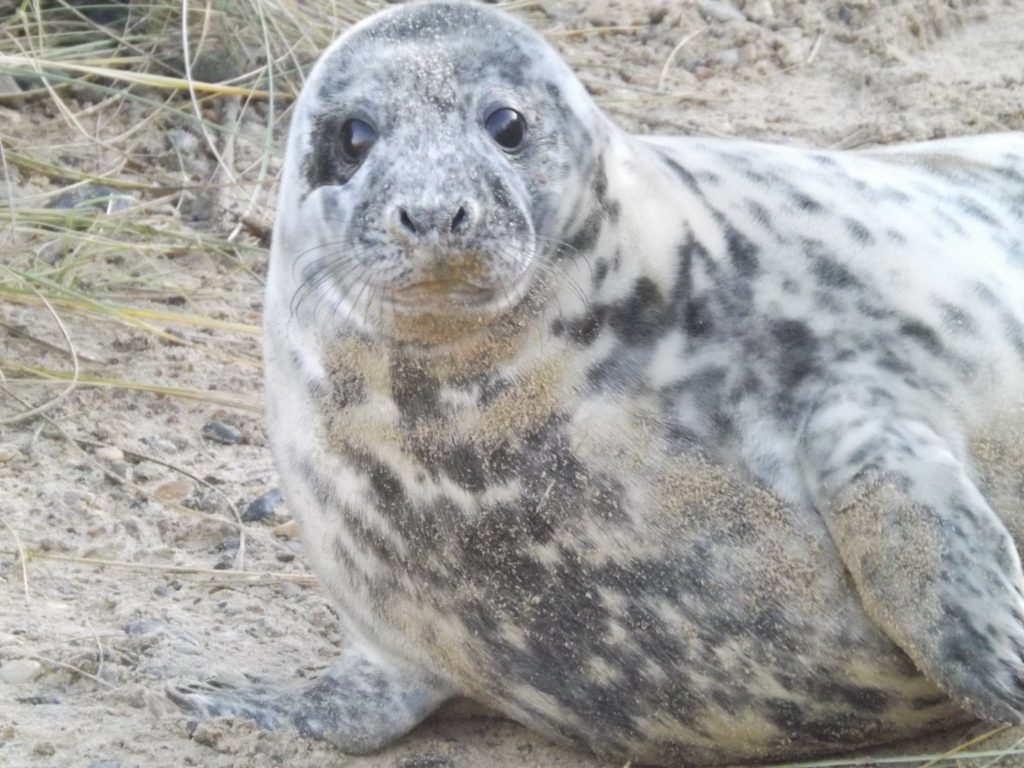Seals are one of the UK’s most beloved marine animals, drawing nature enthusiasts and families alike to the shores of North Norfolk. Known for their endearing faces and playful behaviour, seals make for a delightful spectacle of wildlife in their natural habitat. If you’re planning a trip to North Norfolk, seal watching should undoubtedly top your itinerary. Here’s everything you need to know—from where to spot them to how to ensure these incredible creatures are observed respectfully.

Seal, Horsey Norfolk
Where to See Seals in North Norfolk
North Norfolk boasts some of the most incredible seal viewing spots in the UK. Two primary locations are renowned for their seal colonies—Blakeney Point and Horsey Gap.
Blakeney Point
Blakeney Point is one of the UK’s most famous nature reserves, managed by the National Trust. It’s home to an extensive colony of grey and common seals, with numbers reaching into the thousands, especially during pupping season. The best way to see the seals at Blakeney Point is by taking a boat trip from Morston Quay. Several local operators run seal-watching tours, offering a unique vantage point to see the animals basking on the sandbanks or bobbing in the waters nearby.
Horsey Gap
If you’d rather stay on land, Horsey Gap is the place to be. Located along the Norfolk coast near Great Yarmouth, Horsey Gap offers a rare chance to view seals up close from the beach. During the winter months, you’ll often find seals and their pups lounging on the sand. A short and well-marked walk from the car park takes you to designated areas where you can safely observe the seals without disturbing them.
What Types of Seals Can You Spot?
North Norfolk’s coastline is home to two main seal species:
Grey Seals
Recognisable by their long snouts and speckled coats, grey seals make up the majority of the seal populations in North Norfolk. They are larger than common seals, with males often growing up to 2.5 metres in length.
Common (or Harbour) Seals
Common seals, although smaller, are equally captivating with their rounded heads and V-shaped nostrils. They are less abundant than grey seals in this area but can still be spotted, especially during spring when they give birth to their pups.
Understanding these two species can add another layer of fascination to your seal watching experience—see if you can spot the differences between them on your visit!
When is the Best Time for Seal Watching?
Seals can be seen along the North Norfolk coast year-round, but each season offers a distinctly different experience.
Winter (November to January)
Winter is the best time to see grey seals and their adorable pups. This is pupping season, and large groups of seals gather on the beaches at sites like Horsey Gap, offering a fantastic opportunity to see the heart of their lifecycle.
Summer (June to August)
During the summer months, common seals take centre stage as this is when they give birth to their pups. Boat trips from Blakeney Point are particularly popular in the summer, allowing visitors to see the seals basking on the sandbanks or swimming in the shallow waters.
Spring and Autumn
While these seasons are quieter, seals can still be spotted along the coast. The lighter crowds during these months also make for a more serene experience.
How to Observe Seals Respectfully
Seal watching is an incredible experience, but it’s important to approach it responsibly to ensure the wellbeing of the animals and their environment. Here are some key considerations:
Keep Your Distance
Seals may look approachable, but they are wild animals and can become stressed or anxious if humans get too close. Always keep at least 10 metres away from seals on the beach, and respect any barriers or signs put in place by conservation authorities.
Stay Quiet
Loud noises can frighten seals and may cause them to flee into the water, which can be particularly dangerous during pupping season when pups rely heavily on their mothers. Walk slowly, speak softly, and keep pets under control.
Follow Guidelines on Boat Trips
If you’re taking a boat tour to see seals, choose an operator that adheres to wildlife-friendly guidelines. Boats should maintain a safe distance from resting seals and avoid causing unnecessary disturbance.
Avoid Touching or Feeding the Seals
It’s tempting to interact with these curious creatures, but touching or feeding seals disrupts their natural behaviour and can have harmful consequences. Remember, observing from afar is always best.
Watch for Pups
During pupping season, you’ll often see baby seals resting on the beach while their mothers keep a close eye on them from the water. Avoid getting between a pup and its mother, as this can result in the pup being abandoned—a tragic outcome in many cases.
Prepare for a Memorable Trip
Seal watching in North Norfolk is an unforgettable experience that offers a glimpse into the fascinating lives of these marine mammals. To make the most of your visit, remember to:
Wear warm clothing and sturdy footwear, especially during the winter months.
Bring a pair of binoculars for closer views of seals without encroaching on their space.
Pack a camera to capture the moments (but avoid using flash).
Check the tide times if you’re visiting a beach location, as some areas are only accessible at low tide.
Discover the Magic of North Norfolk’s Wildlife
Whether you’re a lifelong nature enthusiast or simply looking for a family-friendly adventure, seal watching in North Norfolk offers a unique connection to the natural world. By visiting Blakeney Point or Horsey Gap and following the simple guidelines to observe seals respectfully, you’ll create cherished memories while helping preserve the area’s thriving wildlife.
Plan your trip now, and prepare to be captivated by the charm of North Norfolk’s seals. Add it to your bucket list—you won’t regret it!
Further Reading: UK Summer Holiday Traditions
Follow Us on Instagram for Holiday Inspiration